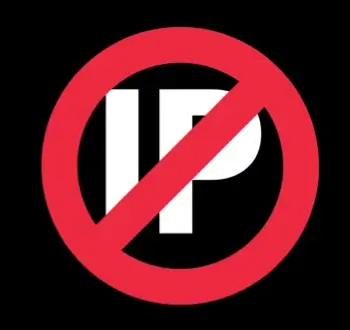Why Is My IP Blacklisted?
Much like Hollywood maintains a “blacklist” of unemployable celebrities, so the Internet keeps lists of IP addresses forbidden from performing certain actions. These IP blacklists, or IP blocklists, inconvenience users, especially if they didn’t do anything to achieve blacklist status. Each list has different standards for listing or delisting IP addresses, but if you’ve found your IP address on a blacklist and wondered how, we’ll cover the possible reasons why and what you can do about it below.
How do I know if my IP is blacklisted?
The simplest way to know if your IP is blacklisted is by using a blacklist check tool. Enter your IP into the IP blacklist checker. It returns the status of your IP in relation to several blocklists. If you don’t know your IP address, visit WhatIsMyIP.com first and check your IP; you can copy it from there.
Because domain name server blacklists don’t notify users when their IP address enters a blacklist, IP blacklist checks are the best way for users to tell whether or not their IP address has been blacklisted.

Reasons for a blacklisted IP address
There are several reasons why your IP may have ended up on a blocklist or in a blacklist database. If you don't know how to get blacklisted, it's quite possible that you did nothing wrong; in some cases, IP blocks are only temporary. Some blacklists or blocklists automatically add any IP addresses assigned via Dynamic Host Configuration Protocol (DHCP) from their Internet service provider (ISP). Almost all residential connections access the Internet through DHCP IP addresses, resulting in many unnecessary additions to IP blacklists. Business accounts, on the other hand, more often receive static IP addresses, making them less susceptible to the issue.
Furthermore, if you do have a DHCP address, it’s possible that your presence on a blocklist has nothing to do with you at all. In some instances, the previous owner of an IP sent email spam, had a virus, or performed some other action to end up on the list. Networks eventually reuse IP addresses once an owner no longer needs it. If your IP is on a blocklist, it could be the result of a previous owner’s activity. Only your ISP knows who had the IP address prior to you; you may have done nothing wrong.
Viruses or malware also often cause an IP to end up on a blocklist. If your computer has malware, whether you know it or not, it may be attempting to communicate with other devices across a network. Networks perceive this activity as an attack, even though you aren’t in control of it. Eventually, another administrator computer detects the activity coming from your device, blocks the IP, and reports the IP address. Therefore, your IP address ends up on a blocklist. Similarly, if you or your mail server send spam, blacklists flag and block those accounts.
My IP address is blocked. How do I get my IP address off a blacklist?
To get your IP address off a blacklist, first ensure that no infection exists on any devices within your network. Encountering a Trojan horse or keylogger would cause bigger issues than a blacklist. You would want to take immediate action to remove the malware before moving forward. Determine your network is clean and that no unauthorized traffic is going out. Then, find the list containing your IP address. Contact them directly for removal.
Every blocklist follows a different process for requesting an IP removal. Unfortunately, just because you make a removal request doesn’t mean the list must honor the request. Nevertheless, a removal request is still the best method for going about removing your IP address from a blacklist or blocklist.
What to do if your IP address stays blacklisted
As mentioned in the previous section, in some cases blacklists or blocklists won't remove your IP address even following a request. The severity of the situation will depend on what you use your computer for. If you’re an average home user, having your IP address on a list likely makes little difference in your day-to-day online activity. However, if you’re a business owner and run your own mail server, a blacklisted server will cause serious issues.
If you find your IP address is still blacklisted, ensure that only clean devices exist on your network. Furthermore, ensure you configure your mail server correctly, eliminating potential spam messages. Lock down the mail server, allowing only authenticated users to send messages back and forth. Once you’ve made sure your network is clean, you can try requesting removal again.
In many cases, you can also hide or change your IP address in order to avoid remaining on the blacklist. While it won’t get your IP off the list, you’ll be using a new IP, so essentially you’ll be able to circumvent the IP ban. This works in cases where it’s a straightforward IP ban like in cases mentioned above. Examples include if the prior owner caused the ban, or if your IP is automatically banned from no fault of your own.
However, in other cases, changing your IP won’t help you avoid a ban. Game servers, for instance, often block a gamer ID rather than an IP address when they blacklist a user. This means it wouldn’t matter what IP you tried to access the server with. As long as it links to your online ID, the server identifies and blocks your access. Servers can also ban you by other identifying information, like email account or username. In any of these cases, changing your IP won’t matter.
In any blacklisting situation, your best bet is always to contact the blacklist directly and submit a removal request.